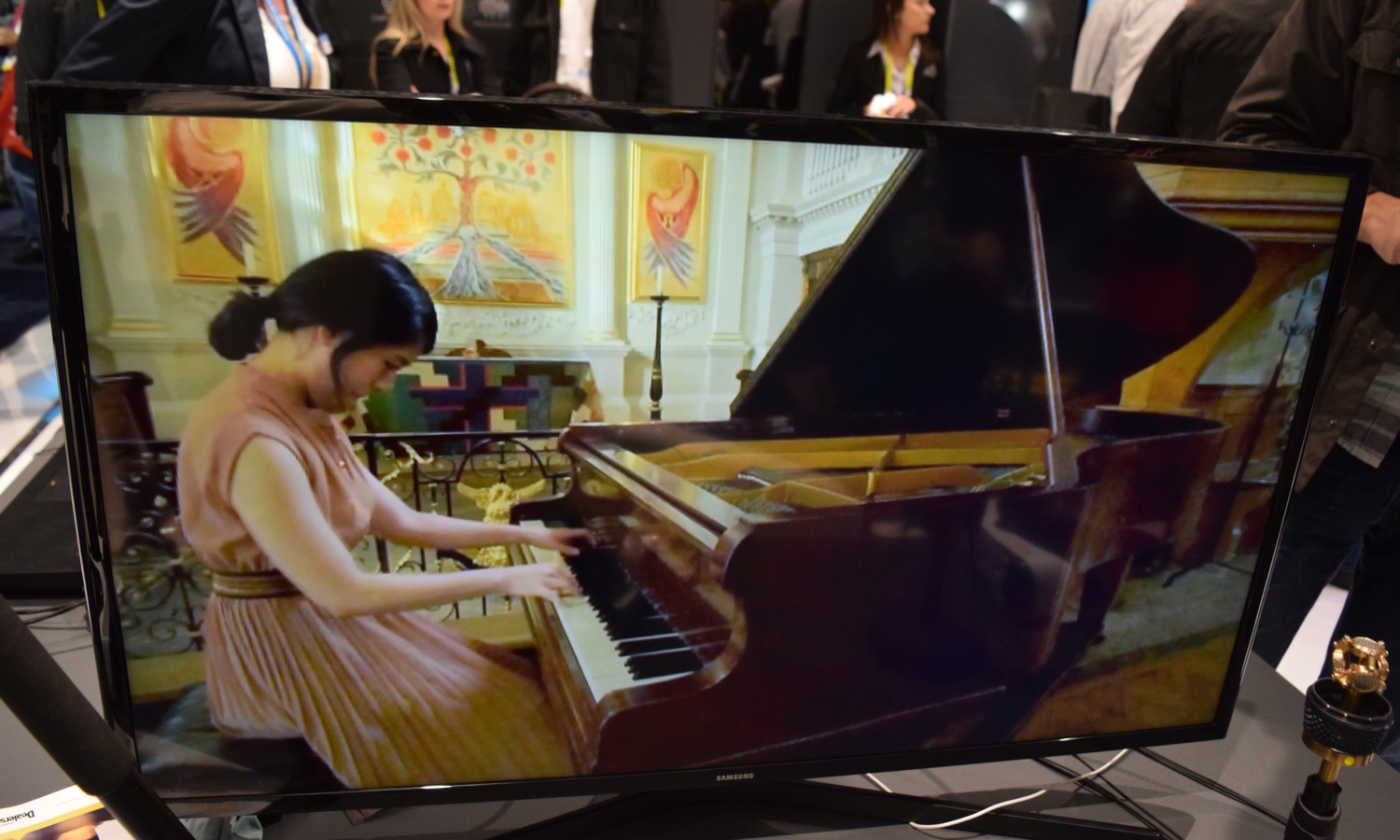Sennheiser's 3D Audio Technology Will Blow Your Mind
Using a mix of hardware and software, Sennheiser's proprietary 3D audio is set to change how your audio experience.
LAS VEGAS — 2016 has been proclaimed the year of virtual reality, thanks to the Samsung Gear VR and the highly anticipated Oculus Rift and HTC Vive. But while each system delivers an immersive visual experience, the audio at times has been lacking.
That's about to change, however, thanks to Sennheiser's new 3D audio initiative. Using a mix of hardware and software, the company is set to create audio that provides an aural experience as deep and realistic as what you see when you strap on a VR headset.

I took my first tentative steps into this new aural world via a quick VR demo in Sennheiser's booth on the CES 2016 show floor yesterday (Jan. 7). Strapping on a Gear VR, I was transported into a church, draped in golden light. Directly in front of me sat a young woman playing the piano. After I looked around and settled into my surroundings, I paid deeper attention to the music around me.
MORE: Apple Music vs. Spotify: Streaming Services Compared
Sennheiser's proprietary algorithm delivered a clarity and presence I had yet to experience in other VR demos. The delicate score ebbed and swelled as the pianist's performance continued. No matter where I turned my head, the algorithm accounted for it, decreasing volume as I slowly turned away from the young woman, and increasing once I faced her again.

To properly capture 3D audio, Sennheiser has partnered with several other companies to develop a virtual-reality microphone. Comprised of several small microphones facing different directions, the unobtrusive microphone records audio in a series of four quadrants and delivers a sound that is truly immersive. The microphone is set to roll out sometime in 2016, with a software plug-in to follow the next year.
MORE: VR Headset Mega Guide: Features and Release Dates
Get instant access to breaking news, the hottest reviews, great deals and helpful tips.
But for Sennheiser, 3D audio covers more than virtual reality. The technology can also be applied to your everyday listening experience. For another demo, I was ushered into a room to listen to the company's Ambeo 3D audio experience. I took the center seat in a room that was dominated by 9 large speakers and 1 subchannel, matching the company's new 9.1 audio format.
Usually, my center front position would have been the best seat in the house, but with a 9.1 format and the company's upmix algorithm, I could have sat in the back of the room and still had the same experience. From the "Star Wars" theme music to a score of classical music to a bombastic car chase scene in "Mission Impossible: Rogue Nation", the audio was expansive. Not only did I hear crystal-clear highs, mids and lows, but the sound seemed to have a palpable weight behind it, as well as a distinct spatial presence that let me hear swelling strings from a violin or a massive explosion in ways I hadn't before.
MORE: 10 Desktop Music Managers
After the demonstration was over, the audience was invited to provide its own music to test out the new technology. After poring through my Spotify playlist, I went with Jazmine Sullivan's "Mascara."
Once my Samsung Galaxy S6 was plugged into the system, the room was filled with the singer's thick alto accompanied by a laid-back piano and tight percussion. The track sounded great, and I noticed a few extra beats in the song I hadn't heard before. The feeling of weightiness prevailed and I felt like I was sitting right in front of the artist, no matter where I stood in the room.
From listening to your favorite music to enhancing your virtual-reality experience, Sennheiser's innovative technology is poised to change the way we interact with our audio. As more VR developers began to integrate the technology with their games, movies and apps, we're on track to get experiences that are equally immersive on the audio and visual fronts.

Sherri L. Smith has been cranking out product reviews for Laptopmag.com since 2011. In that time, she's reviewed more than her share of laptops, tablets, smartphones and everything in between. The resident gamer and audio junkie, Sherri was previously a managing editor for Black Web 2.0 and contributed to BET.Com and Popgadget.
